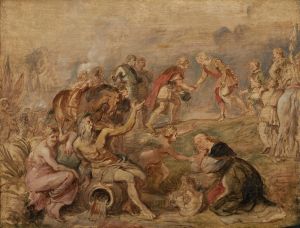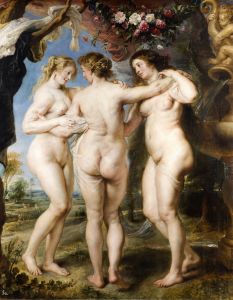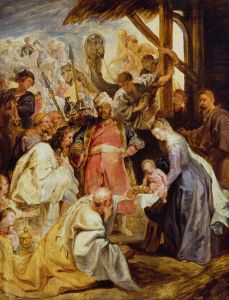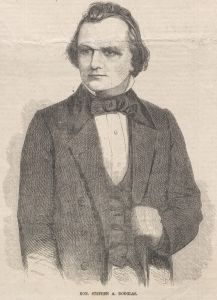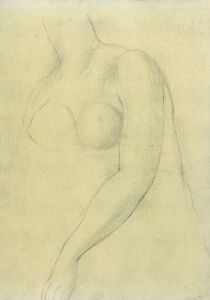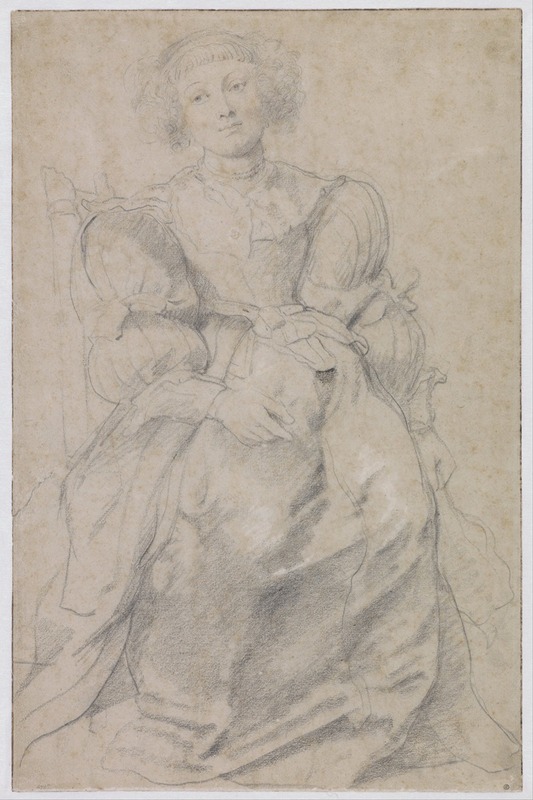
Portrait of Hélène Fourment
A hand-painted replica of Peter Paul Rubens’s masterpiece Portrait of Hélène Fourment, meticulously crafted by professional artists to capture the true essence of the original. Each piece is created with museum-quality canvas and rare mineral pigments, carefully painted by experienced artists with delicate brushstrokes and rich, layered colors to perfectly recreate the texture of the original artwork. Unlike machine-printed reproductions, this hand-painted version brings the painting to life, infused with the artist’s emotions and skill in every stroke. Whether for personal collection or home decoration, it instantly elevates the artistic atmosphere of any space.
Peter Paul Rubens, a prominent Flemish Baroque painter, is renowned for his dynamic compositions, vibrant color palette, and sensuous depiction of figures. Among his many works, "Portrait of Hélène Fourment" stands out as a significant piece, reflecting both his artistic prowess and personal life. Hélène Fourment was Rubens' second wife, and she became a frequent subject in his paintings, embodying the ideal of beauty during the Baroque period.
Rubens married Hélène Fourment in 1630, when she was just 16 years old and he was 53. This marriage brought him not only personal happiness but also a muse who inspired many of his later works. Hélène's youthful beauty and charm are captured in several portraits, where Rubens often portrayed her with a sense of warmth and affection. The "Portrait of Hélène Fourment" is one such painting, showcasing her elegance and the artist's admiration for her.
The painting is characterized by Rubens' masterful use of color and light, which brings out the textures of the fabrics and the softness of Hélène's skin. Her attire, often depicted in luxurious fabrics, reflects the fashion of the time and Rubens' attention to detail. The background is typically subdued, ensuring that the focus remains on Hélène, highlighting her as the central figure of the composition.
Rubens' technique in this portrait exemplifies his ability to blend realism with idealism. The lifelike representation of Hélène's features is combined with an idealized portrayal that emphasizes her grace and poise. This approach was typical of Rubens, who sought to capture not just the physical likeness of his subjects but also their inner vitality and spirit.
The "Portrait of Hélène Fourment" is more than just a depiction of Rubens' wife; it is a testament to the artist's skill in portraiture and his deep personal connection to his subject. Through this painting, Rubens conveys a sense of intimacy and admiration, offering viewers a glimpse into his private life and the affection he held for Hélène.
Rubens' portraits of Hélène, including this one, are significant not only for their artistic merit but also for their historical context. They provide insight into the social and cultural norms of 17th-century Flanders, particularly in terms of fashion, beauty standards, and the role of women in society. Hélène's portrayal as a dignified and elegant figure reflects the status and respect accorded to women of her standing during this period.
The painting is housed in various collections, with some versions or studies possibly residing in major museums or private collections. Rubens' works, including his portraits of Hélène, continue to be studied and admired for their contribution to the Baroque art movement and their enduring appeal.
In summary, "Portrait of Hélène Fourment" by Peter Paul Rubens is a remarkable example of Baroque portraiture, capturing the essence of the artist's style and his personal connection to the subject. Through his masterful use of color, light, and composition, Rubens immortalizes Hélène's beauty and charm, offering a timeless representation of his beloved wife.








